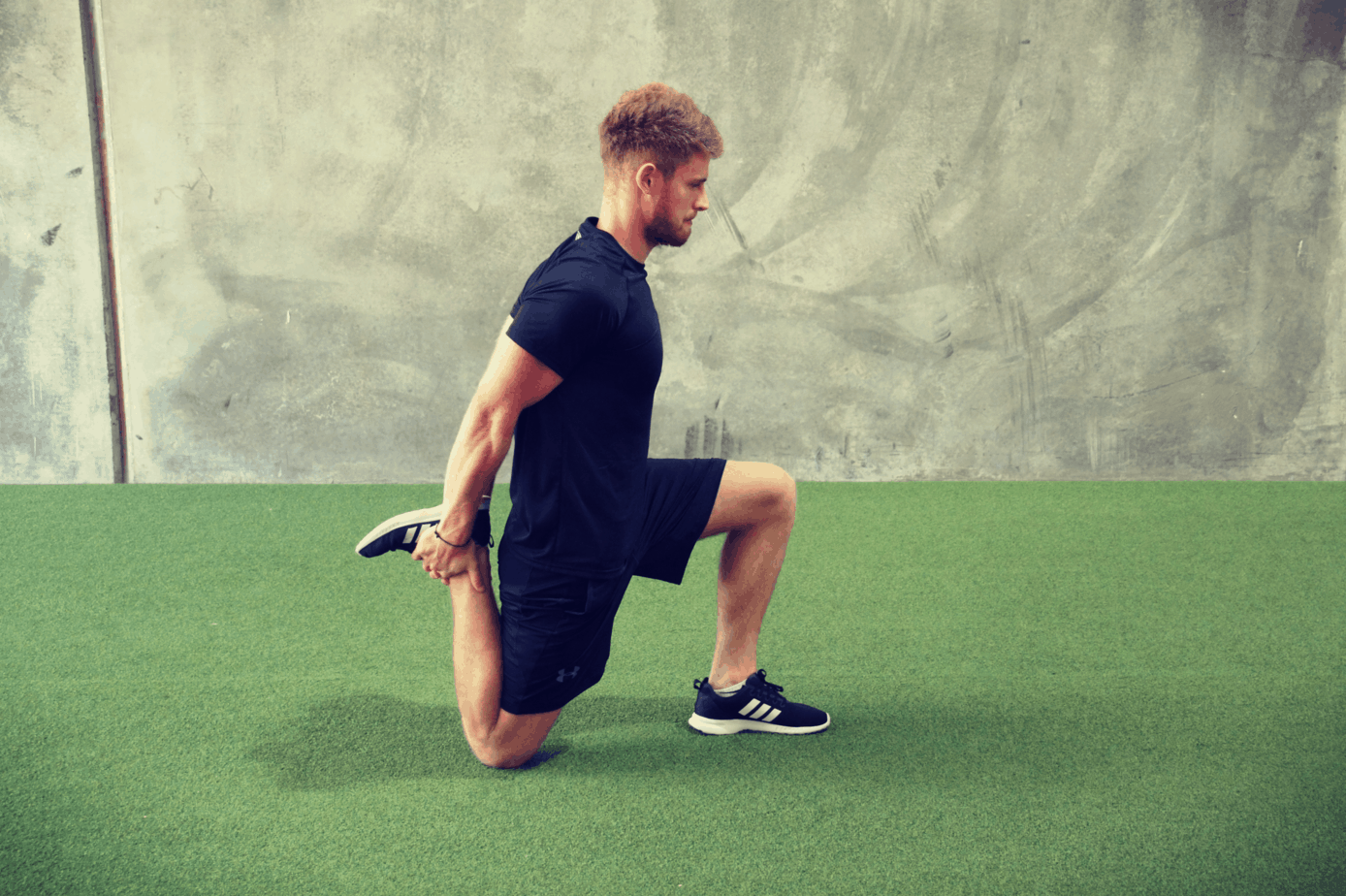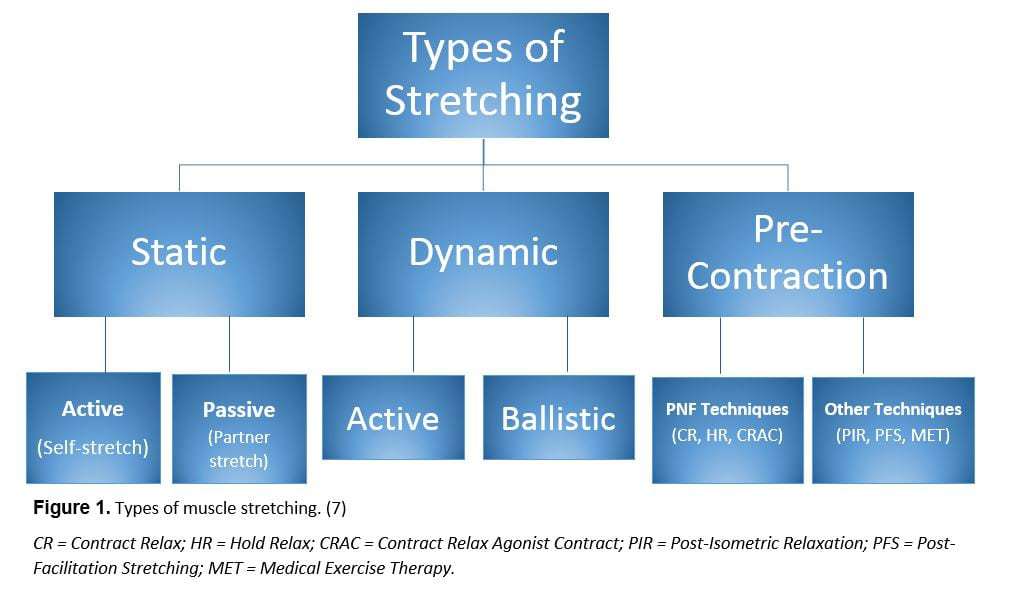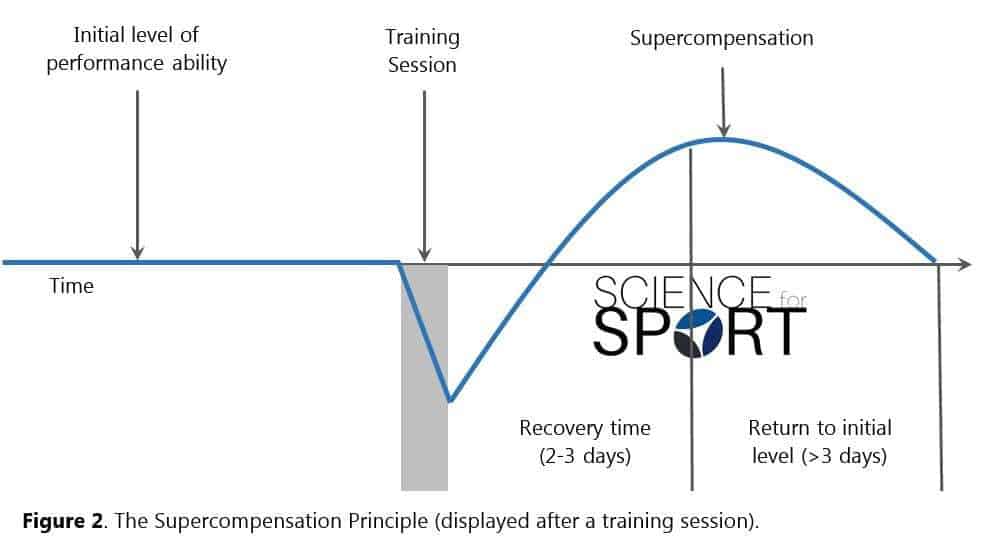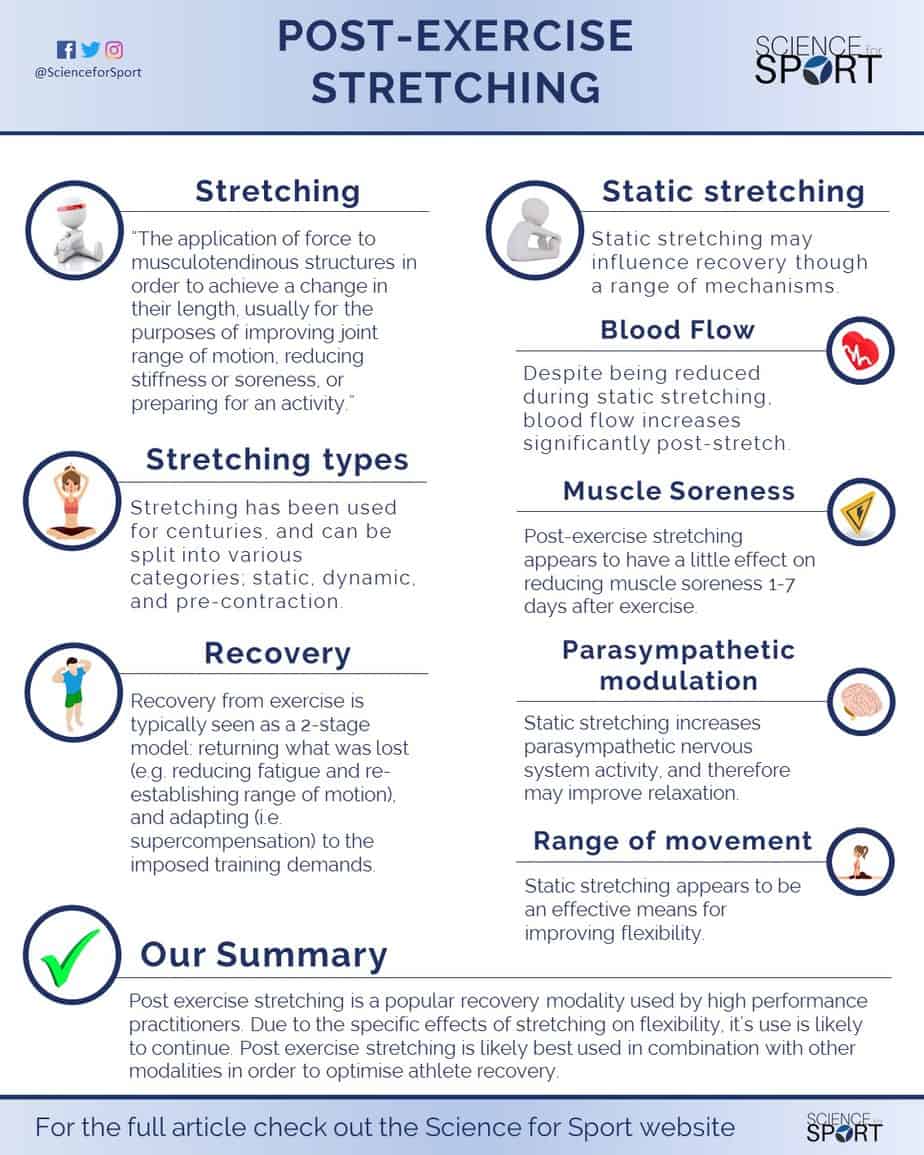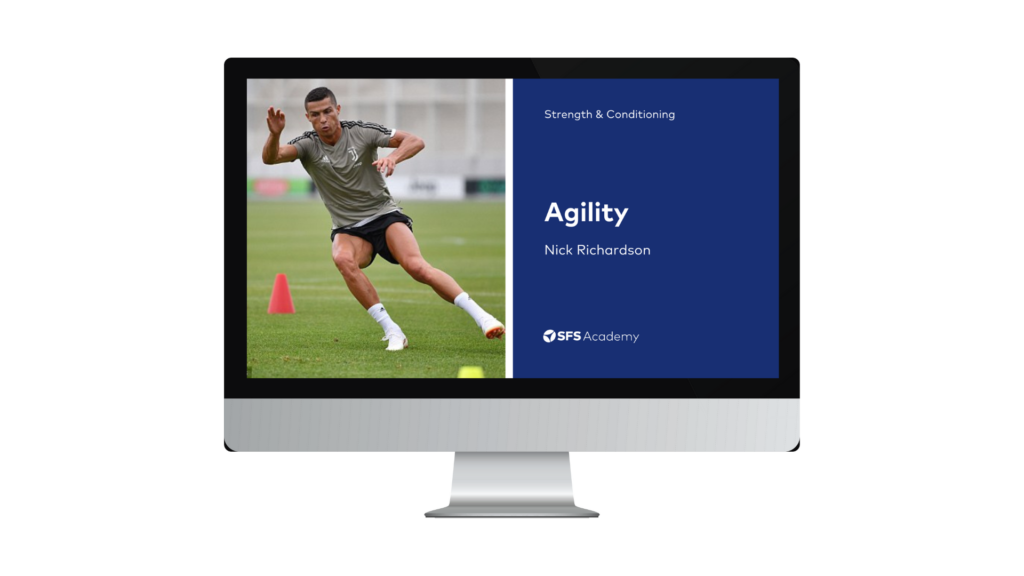Contents of Article
- Summary
- Post-exercise stretching: An introduction
- What is stretching?
- What is recovery?
- Does post-exercise stretching enhance recovery?
- Are there any issues regarding research on stretching?
- What should future research on stretching focus on?
- Should you stretch after exercise?
- References
- About the Author
Summary
Post-exercise stretching has been performed as a recovery modality for many decades, if not centuries and beyond, and the current body of research demonstrates that it may have several beneficial effects on recovery. These effects range from decreasing muscle soreness, albeit by a very small amount, increasing flexibility, increasing local blood flow, and decreasing neural excitability. As a result, static stretching may be a useful form of recovery following exercise.

Post-exercise stretching: An introduction
The practice of stretching after exercise (e.g. training and competition) is extremely common, and something that has been performed for many decades, if not centuries and more. The common reasons for stretching after exercise are to:
- Reduce muscle soreness
- Reduce muscle stiffness (i.e. regain pre-exercise ranges of motion)
This was perhaps first popularised after a particular research publication in the 1960s (1). Since then, whilst some of the underpinning theory supporting the usefulness of post-exercise stretching has been discredited, the practice of this recovery modality still persists (2).
What is stretching?
Stretching has been defined as: “the application of force to musculotendinous structures in order to achieve a change in their length, usually for the purposes of improving joint range of motion, reducing stiffness or soreness, or preparing for an activity.” (30).
Though there are many forms of stretching (Figure 1), static stretching appears to be the most common type prescribed in post-exercise cool-down routines.
Stretching is also classified as either acute or chronic. Acute stretching typically refers to a single stretch usually lasting > 30 seconds or less (4, 5). Chronic stretching refers to repeated stretches over a series of sets, days and even weeks (6).
What is recovery?
Recovery is traditionally defined as a 1-stage model, that is, returning something that was lost (7), or a reestablishment of the initial stage (8). However, recovery in sport, or from exercise is typically seen as a 2-stage model: returning what was lost (e.g. reducing fatigue and re-establishing range of motion) and adapting (i.e. super-compensation) to the imposed training demands (6).
Given this, full recovery should not be considered complete until the athlete has achieved a level of fitness that is higher than pre-exercise levels (i.e. the super-compensation principle). This principle is simply displayed in Figure 2.
Does post-exercise stretching improve recovery?
As previously mentioned, the primary objectives of post-exercise stretching to enhance recovery are two-fold:
- Reduce muscle soreness
- Reduce muscle stiffness (i.e. regain pre-exercise ranges of motion)
Before continuing, it is worth noting that other post-exercise modalities such as heat and cold therapies, vibration, massage, hydrotherapy, anaesthetics, and foam rolling have all been shown to reduce muscle soreness and enhance the joint range of motion, thus enhancing recovery (9-17).
Blood Flow
During static stretching, blood flow, capillary region oxygenation, and the velocity of red blood cells to the muscle appear to decrease (18-21). Perhaps this is to be expected as the mechanical strain exerted on the muscle from the stretch is likely to cause vascular compression and lengthening. However, immediately after the stretch is released, blood flow appears to increase significantly beyond its previous pre-stretching levels (16).
Static stretching, therefore, appears to induce a rebounding effect on muscle blood flow – i.e. reduces flow during the stretch, but quickly elevates it afterwards. Temporarily reducing, and then increasing, blood flow may facilitate recovery by improving the delivery of nutrients whilst simultaneously removing metabolites, however, this is yet to be confirmed by research.
Muscle Soreness
Reducing muscle soreness after exercise is a cornerstone objective of enhancing recovery. Much research has measured the effects of post-exercise stretching on muscle soreness and very often found positive results (11); which simply means stretching after exercise reduces muscle soreness.
However, most of this research has been reported to be of low to moderate quality (2). One extensive meta-analysis on this topic, including over 2,500 participants, concluded that post-exercise stretching for recovery only reduced the effects of muscle soreness by 1-4 points on a 100-point scale (1-4% improvement) (2). Despite this figure being statistically significant, the effect is very small. As such, post-exercise static stretching may have little to no worthwhile effect on muscle soreness. On the flip side, perhaps every little counts.
Parasympathetic Modulation
Things here can get a little complicated, so we will keep it as quick and as straightforward as possible.
The Autonomic Nervous System is comprised of two branches (Figure 3):
- Sympathetic Nervous System (SNS)
- Parasympathetic Nervous System (PSNS)
The easiest way to distinguish the differences between the two is to associate the ‘fight or flight’ responses with the SNS, and ‘rest and digest’ responses with the PSNS. Therefore, the SNS increases heart rate, whilst the PSNS slows it down (Figure 3). Essentially, the PSNS helps facilitate recovery after a stressful event (e.g. competition or training) by counteracting the effects of the SNS which raises excitability and readiness (22).
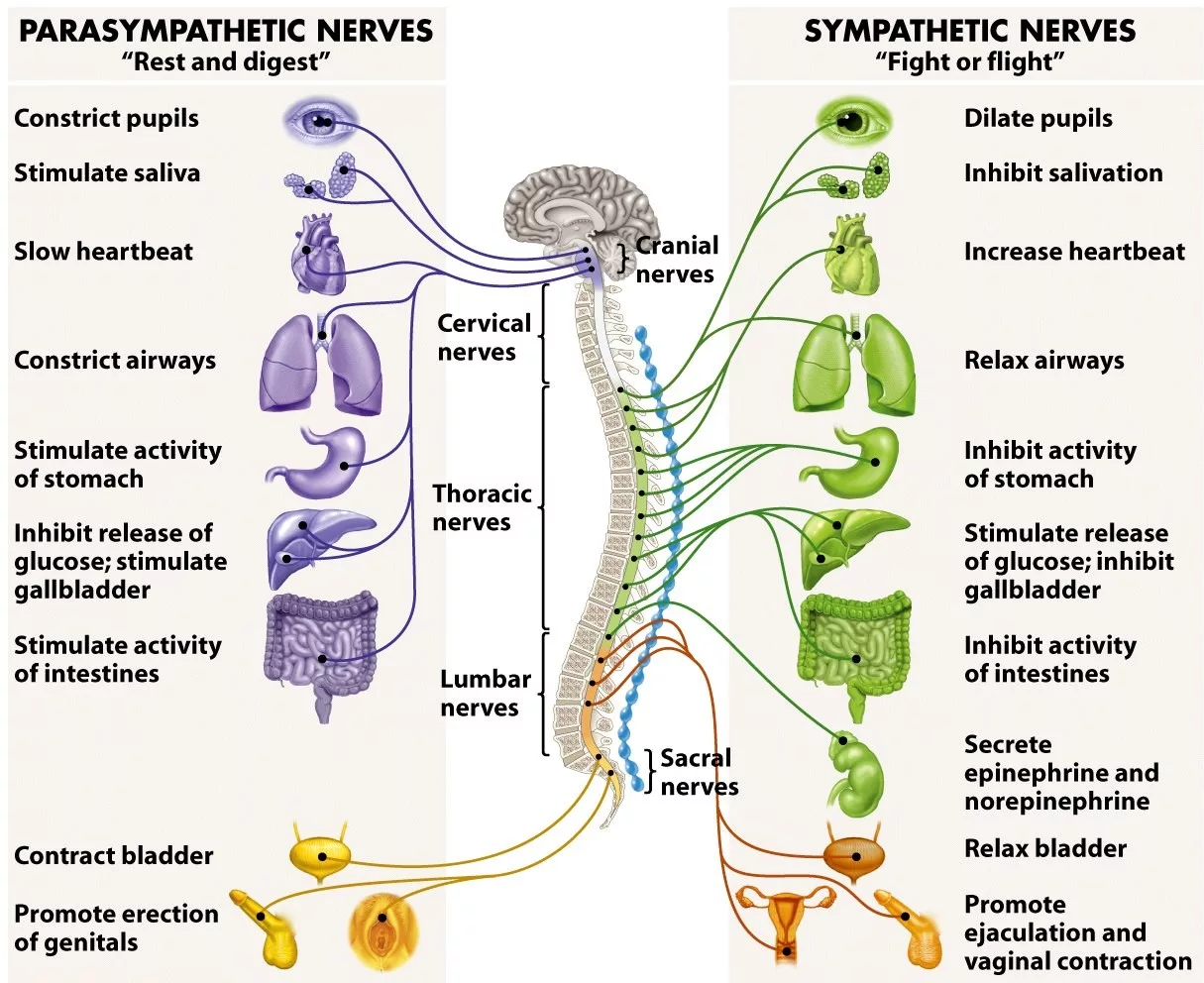
Given this, the PSNS is associated with systemic (whole-body) relaxation. Relaxation, which reduces PSNS activity, is an important component of recovery and the rejuvenation of hemostasis and adaptation after exercise.
Static stretching has been shown to increase both short-term (same day) and long-term (over multiple weeks) PSNS modulation (i.e. activity), as measured by changes in the activity of the heart (e.g. heart rate variability) (23-28). For example, performing static stretching daily for 15 minutes, consistently for 28 days, can improve heart rate variability (28). As a result, static stretching appears to be a useful tool for increasing PSNS activity and therefore promoting relaxation.
Range of Motion (Flexibility)
Flexibility is usually referred to as the range of motion around a joint, or a series of joints (e.g. the spine). Static or pre-contraction stretching techniques are perhaps most frequently used to develop or increase, joint flexibility – particularly after exercise. It must be understood that there is a difference between ‘stretching’, which is commonly used to improve flexibility, and ‘range of motion’ exercises, which are most commonly referred to as ‘mobility’ exercises (29).
Anecdotal evidence would suggest that stretching after exercise is most often used by coaches and athletes to restore pre-exercise ranges of motion, rather than improve flexibility. Study after study has shown that static stretching can improve joint flexibility (30-37), however, the mechanisms in which it does are still not completely clear.
As some research has been unable to show that stretching can improve tissue length (e.g. muscle-tendon unit), it has been suggested that the increases in flexibility are the result of an improved stretch tolerance (ability to withstand the stretch), and not tissue extensibility (e.g. increased muscle-tendon length) (38-42). Although this has been proposed, newer higher quality evidence demonstrates that static stretching can improve flexibility by altering the mechanical factors associated with tissue stiffness (passive fascicle length and angle) (43). Static stretching, therefore, appears to improve flexibility and do so by increasing passive fascicle length and decreasing passive fascicle angle.
To add to this, static stretching appears to decrease neural excitability by as much as 16-88 %, observed by changes in spinal reflex and H-reflex responses (44). Increases in flexibility can also be attributed to decreases in neural excitability (44). As a result, static stretching may also improve flexibility by decreasing neural excitability, in addition to altering the mechanical structures of the muscle-tendon unit (fascicle length and angle).
Are there any issues regarding research on stretching?
One key issue surrounding virtually all stretching-based research, is the current ability to appropriately quantify the intensity of stretching – i.e. how do you measure the intensity of a stretch? For example, much research has used subjective measures of intensity, such as to the point of pain or just before the point of pain, however, the perception of pain is very different for each person. To further complicate things, discomfort and pain may be exercise specific – suggesting that individuals may have higher stretch tolerances during certain exercises than others (11).
This issue also complicates things further when research is compared – as an athlete may have a higher pain tolerance for a quadriceps stretch, than for a hamstring stretch. Athletes are also often directed to perform a stretch that is pain-free, but the line between mere discomfort and pain is unclear (6). Furthermore, to the best of our knowledge, no single metric has ever been proposed which can reliably measure (i.e. quantify) the level, intensity, or magnitude of stretching.
What should future research on stretching focus on?
Having discussed the potential limitations of stretching and its effects on recovery, in addition to highlighting a series of issues regarding the modality, the following topics are advisable for future research:
- Direct comparisons between stretching and other recovery modalities and their abilities to improve flexibility (static stretching vs. heat or cold therapy).
- A metric for quantifying (i.e. measuring) the intensity of stretching.
- Examine the mechanical changes to the muscle-tendon complex imposed by static stretching.
- Changes in PSNS activity 24, 36, 48, and 96 hours after exercise and stretching.
Should you stretch after exercise?
The following provides clinical information, abstracted from this review, which can be applied to practical environments:
- Post-exercise stretching appears to have little effect on reducing muscle soreness 1-7 days after exercise.
- Static stretching increases PSNS activity, which may, therefore, improve relaxation.
- Static stretching appears to be an effective means for improving flexibility by causing changes to both the mechanical properties of the muscle-tendon unit and decreasing neural excitability.
- Static stretching initially reduces blood flow, capillary region oxygenation, and the velocity of red blood cells to the muscle, but this is significantly increased after the stretch.
- de Vries 1961 de Vries HA. Prevention of muscular distress after exercise. Research Quarterly 1961;32:177–85. http://www.tandfonline.com/doi/abs/10.1080/10671188.1961.10613131
- Herbert RD, de Noronha M, Kamper SJ. Stretching to prevent or reduce muscle soreness after exercise. Cochrane Database of Systematic Reviews 2011, Issue 7. http://www.ncbi.nlm.nih.gov/pubmed/17943822
- Armiger P and Martyn MA. Stretching for Functional Flexibility. Philadelphia, PA: Lippincott Williams & Wilkins, 2010. http://www.amazon.com/Stretching-Functional-Flexibility-Phil-Armiger/dp/078176792X
- Bandy WD and Irion JM. The effect of time on static stretch on the flexibility of the hamstring muscles. Phys Ther 74: 54–61, 1994. http://www.ncbi.nlm.nih.gov/pubmed/8066111
- Roberts JM and Wilson K. Effect of stretching duration on active and passive range of motion in the lower extremity. Br J Sports Med 33: 259–263, 1999. http://bjsm.bmj.com/content/33/4/259
- Sands WA, McNeal JR, Murray SR, Ramsey MW, Sato K, Mizuguchi S, et al. Stretching and its effects on recovery: a review. Strength Cond J. 2013;35:30-6. http://journals.lww.com/nsca-scj/Abstract/2013/10000/Stretching_and_Its_Effects_on_Recovery___A_Review.5.aspx
- Stone MH, Stone ME, and Sands WA. Principles and Practice of Resistance Training. Champaign, IL: Human Kinetics, 2007. http://www.humankinetics.com/products/all-products/principles-and-practice-of-resistance-training
- Kellmann M. Underrecovery and overtraining: Different concepts—similar impact? In: Enhancing Recovery. Kellmann M, ed. Champaign, IL: Human Kinetics, 2002. pp. 3–24. https://books.google.com.au/books?id=Qp-WkTxvlvIC&pg=PA3&lpg=PA3&dq=Underrecovery+and+overtraining:+Different+concepts%E2%80%94similar+impact?&source=bl&ots=qI5ADXeqfL&sig=tCXM4K7Iz8v6qo8ti4HaGZvHvBw&hl=en&sa=X&ved=0ahUKEwjgoJaWstjTAhVGopQKHU13C9wQ6AEIMTAB#v=onepage&q=Underrecovery%20and%20overtraining%3A%20Different%20concepts%E2%80%94similar%20impact%3F&f=false
- Kinser AM, Ramsey MW, O’Bryant HS, Ayres CA, Sands WA, and Stone MH. Vibration and stretching effects on flexibility and explosive strength in young gymnasts. Med Sci Sports Exer 40: 133– 140, 2008. http://www.ncbi.nlm.nih.gov/pubmed/18091012
- Krabak BJ, Laskowski ER, Smith J, Stuart MJ, and Wong GY. Neurophysiologic influences on hamstring flexibility: A pilot study. Clin J Sports Med 11: 241–246, 2001. http://www.ncbi.nlm.nih.gov/pubmed/11753061
- McNeal JR and Sands WA. Stretching for performance enhancement. Curr Sports Med Rep 5: 141–146, 2006. http://www.ncbi.nlm.nih.gov/pubmed/16640950
- Sands WA. Flexibility. In: USA Diving Coach Development Reference Manual. Malina RM and Gabriel JL, eds. Indianapolis, IN: USA Diving, 2007. pp. 95–103. 74.
- Sands WA and McNeal JR. Enhancing flexibility in gymnastics. Technique 20: 6–9, 2000. 75. https://www.google.com.au/url?sa=t&rct=j&q=&esrc=s&source=web&cd=1&cad=rja&uact=8&ved=0ahUKEwjigdWgnY_LAhXEjpQKHc2FCwwQFgghMAA&url=https%3A%2F%2Fusagym.org%2Fpages%2Fhome%2Fpublications%2Ftechnique%2F2000%2F5%2Fflexibility.pdf&usg=AFQjCNGPoVDqdH00m0WDc_JNnZNawwI6Cg&sig2=Nb6ijTOkfFxUNikaSCvbOw
- Sands WA, McNeal JR, and Stone MH. Vibration, split stretching, and static vertical jump performance in young male gymnasts. Med Sci Sports Exer 41: S255, 2009. https://www.researchgate.net/publication/246657638_Vibration_Split_Stretching_And_Static_Vertical_Jump_Performance_In_Young_Male_Gymnasts_1641
- MacDonald, G. Z., Penney, M. D., Mullaley, M. E., Cuconato, A. L., Drake, C. D., Behm, D. G., & Button, D. C. (2013). An acute bout of self-myofascial release increases range of motion without a subsequent decrease in muscle activation or force. The Journal of Strength & Conditioning Research, 27(3), 812-821. http://www.ncbi.nlm.nih.gov/pubmed/22580977
- Mohr, A.R., Long, B.C., & Goad, C.L. (2014) Effect of foam rolling and static stretching on passive hip-flexion range of motion. Journal of Sport Rehabilitation, 23(4), pp.296-299. http://www.ncbi.nlm.nih.gov/pubmed/24458506
- Ebrahim, A. W., & Elghany, A. W. A. (2013). The effect of foam roller exercise and Nanoparticle in speeding of healing of sport injuries. Journal of American Science, 6, 9. http://www.ncbi.nlm.nih.gov/pmc/articles/PMC4645924/
- Matchanov AT, Levtov VA, and Orlov VV. Changes of the blood flow in longitudinal stretch of the cat gastrocnemius muscle. Fiziol Zh SSR Im I. M. Sechenova 69: 74– 83, 1983. http://www.ncbi.nlm.nih.gov/pubmed/6825891
- Poole DC, Musch TK, and Kindig CA. In vivo microvascular structural and functional consequences of muscle length changes. Am J Physiol 272: H2107–H2114, 1997. http://www.ncbi.nlm.nih.gov/pubmed/9176275
- Stainsby WN, Fales JT, and Lilienthal JL. Effect of stretch on oxygen consumption of dog skeletal muscle in situ. Bull Johns Hopkins Hosp 12: 209–211, 1956. http://www.ncbi.nlm.nih.gov/pubmed/13374460
- Kruse NT, Silette CR, Scheuermann BW. Influence of passive stretch on muscle blood flow, oxygenation and central cardiovascular responses in healthy young males. Am J Physiol Heart Circ Physiol 310: H1210 –H1221, 2016. https://www.ncbi.nlm.nih.gov/pubmed/26945077
- Tortora, G.J., and Derrickson, B.H. (2009). Principles of Anatomy and Physiology. Volume 1, 12th ed. John Wiley & Sons: Asia. http://www.wileydirect.com.au/buy/principles-of-anatomy-and-physiology-14th-edition/
- Wong A, Sanchez-Gonzalez M, Kalfon R, Alvarez-Alvarado S, Figueroa A. The Effects of Stretching Training on Cardiac Autonomic Function in Obese Postmenopausal Women. ALTERNATIVE THERAPIES, [E-PUB AHEAD OF PRINT]. https://www.ncbi.nlm.nih.gov/pubmed/28323625
- Farinatti, PTV, Branda˜ o, C, Soares, PPS, and Duarte, AFA. Acute effects of stretching exercise on the heart rate variability in subjects with low flexibility levels. J Strength Cond Res 25(6): 1579–1585, 2011. https://www.ncbi.nlm.nih.gov/pubmed/21386722
- Yeo S. Prenatal Stretching Exercise and Autonomic Responses: Preliminary Data and a Model for Reducing Preeclampsia. J Nurs Scholarsh. 2010 June 1; 42(2): 113–121. https://www.ncbi.nlm.nih.gov/pubmed/20618595
- Takayuki Inami, Takuya Shimizu, Reizo Baba, and Akemi Nakagaki, “Acute Changes in Autonomic Nerve Activity during Passive Static Stretching.” American Journal of Sports Science and Medicine, vol. 2, no. 4 (2014): 166-170. doi: 10.12691/ajssm-2-4-9. https://www.researchgate.net/publication/274517864_Acute_Changes_in_Autonomic_Nerve_Activity_during_Passive_Static_Stretching
- Gladwell, J. Fletcher, N. Patel, L. J. Elvidge, D. Lloyd, S. Chowdhary and J. H. Coote. The influence of small fibre muscle mechanoreceptors on the cardiac vagus in humans. J Physiol 567.2 (2005) pp 713–721. https://www.ncbi.nlm.nih.gov/pubmed/15946971
- Mueck-Weymann M, Jansoff G, and Mueck H. Stretching increases heart rate variability in healthy athletes complaining about limited muscular flexibility. Clin Auton Res (2004) 14 : 15–18. https://www.ncbi.nlm.nih.gov/pubmed/15045595
- Kisner C and Colby LA. Therapeutic Exercise Foundations and Techniques. Philadelphia, PA: F.A. Davis, 2002. http://www.amazon.com/Therapeutic-Exercise-Foundations-Techniques-Edition/dp/080362574X
- Light KE, Nuzik S, Personius W, Barstrom A (1984) Low-load prolonged stretch vs. high-load brief stretch in treating knee contractures. Phys Ther 64:330–333. https://www.ncbi.nlm.nih.gov/pubmed/6366834
- Usuba M, Akai M, Shirasaki Y, Miyakawa S (2007) Experimental joint contracture correction with low torque-long duration repeated stretching. Clin Orthop 456:70–78. https://www.ncbi.nlm.nih.gov/pubmed/17224840
- Dempsey AL, Branch TP, Mills T, Karsch RM (2010) Highintensity mechanical therapy for loss of knee extension for worker’s compensation and non-compensation patients. Sports Med Arthrosc Rehabil Ther Technol SMARTT 2:26. https://www.ncbi.nlm.nih.gov/pmc/articles/PMC2964642/
- Moriyama H, Tobimatsu Y, Ozawa J et al (2013) Amount of torque and duration of stretching affects correction of knee contracture in a rat model of spinal cord injury. Clin Orthop 471:3626–3636. https://www.ncbi.nlm.nih.gov/pmc/articles/PMC3792286/
- Freitas SR, Vilarinho D, Vaz JR et al (2015) Responses to static stretching are dependent on stretch intensity and duration. Clin Physiol Funct Imaging 35:478–484. https://www.ncbi.nlm.nih.gov/pubmed/25164268
- Marques AP, Vasconcelos AAP, Cabral CMN and Sacco ICN. Effect of frequency of static stretching on flexibility, hamstring tightness and electromyographic activity. Braz J Med Biol Res, October 2009, Volume 42(10) 949-953. https://www.ncbi.nlm.nih.gov/pubmed/19784479
- O’Sullivan K, Murray E and Sainsbury D. The effect of warm-up, static stretching and dynamic stretching on hamstring flexibility in previously injured subjects. BMC Musculoskeletal Disorders 2009, 10:37. https://www.ncbi.nlm.nih.gov/pubmed/19371432
- ODUNAIYA N.A., *HAMZAT T.K., AJAYI O.F. The Effects of Static Stretch Duration on the Flexibility of Hamstring Muscles. African Journal of Biomedical Research, Vol. 8 (2005); 79 – 82. http://www.bioline.org.br/pdf?md05014
- Muanjai P, Jones DA, Mickevicius M, Satkunskiene D, Snieckus A, Skurvydas A, Kamandulis S. The acute benefits and risks of passive stretching to the point of pain. Eur J Appl Physiol. https://www.ncbi.nlm.nih.gov/pubmed/28391391
- Ylinen J, Kankainen T, Kautiainen H, Rezasoltani A, Kuukkanen T, Hakkinen A. Effect of stretching on hamstring muscle compliance. J Rehabil Med. Jan 2009;41(1):80-84. http://www.ncbi.nlm.nih.gov/pubmed/19197574
- Halbertsma JP, Goeken LN. Stretching exercises: effect on passive extensibility and stiffness in short hamstrings of healthy subjects. Arch Phys Med Rehabil. Sep 1994;75(9):976-981 http://www.ncbi.nlm.nih.gov/pubmed/8085933
- Ben M, Harvey LA. Regular stretch does not increase muscle extensibility: a randomized controlled trial. Scandinavian journal of medicine & science in sports. Feb 2010;20(1):136-144. http://www.ncbi.nlm.nih.gov/pubmed/19497032
- Law RY, Harvey LA, Nicholas MK, Tonkin L, De Sousa M, Finniss DG. Stretch exercises increase tolerance to stretch in patients with chronic musculoskeletal pain: a randomized controlled trial. Phys Ther. Oct 2009;89(10):1016-1026. http://www.ncbi.nlm.nih.gov/pubmed/19696119
- Hirata K, Kanehisa H, Miyamoto N. Acute effect of static stretching on passive stiffness of the human gastrocnemius fascicle measured by ultrasound shear wave elastography. Eur J Appl Physiol (2017) 117:493–499. https://www.ncbi.nlm.nih.gov/pubmed/28161870
- Budini F and Tilp M. Changes in H-reflex amplitude to muscle stretch and lengthening in humans. Rev. Neurosci. 2016; aop. https://www.ncbi.nlm.nih.gov/pubmed/27089411
